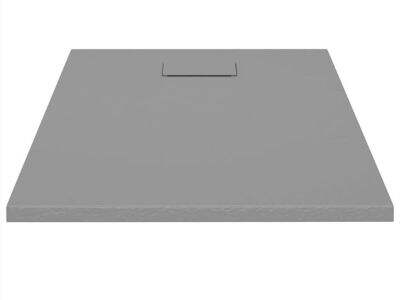Die Spritzgießerei ist ein einzigartiger Prozess zur Herstellung all jener Kunststoffprodukte, die wir jeden Tag verwenden. Dies ist ein äußerst wichtiges Verfahren, da es dem Unternehmen ermöglicht, skalierbare Produkte herzustellen, die bei jeder Produktion identisch sind. Ein Beispiel wären Kunststoffflaschen, Spielzeug oder Behälter. Sie müssen immer gleich aussehen und funktionieren, und dieser Ansatz trägt dazu bei. Dafür müssen wir die bewährten Praktiken befolgen, die uns in die richtige Richtung führen, um hervorragende Produkte zu liefern.
Kontrolle des Kunststoffflusses
Die erste Technik, die wir verstehen sollten, ist die Kontrolle des Spritzimpakts. Diese kohlefaser SMC ist eine Technik, die darauf abzielt, dass wir die Kontrolle über den Fluss des Plastiks in der Form behalten. Das Plastik muss genau mit der richtigen Geschwindigkeit und dem richtigen Druck Portions eingefügt werden. Ist die Geschwindigkeit oder der Druck falsch, kann das Produkt Probleme haben, wie zum Beispiel zu geringe Festigkeit oder fehlerhafte Erscheinung. Es ist dasselbe, als wenn du ein Getränk einschenkst – schenkst du nicht schnell genug oder zu schnell, dann läuft es über den Becher, oder es ist nicht genug im Becher. Derselbe Gedanke gilt hier.
Richtige Einstellung der Maschine
Die zweite zu betrachtende Methode ist die Einstellung der Maschinenparameter an der Spritzgießanlage. Um sicherzustellen, dass kohlenstofffasermatsch formbarer Verbundstoff die Kunststoffformen werden richtig, wenn diese Maschine genau richtig eingestellt ist. Es ist ein bisschen wie Kuchen backen. Stellen Sie den Ofen auf eine Temperatur, die zu heiß oder zu kalt ist, und der Kuchen kann verbrennen oder nicht richtig aufgehen. Im Prozess des Kunststoffformens muss die Temperatur, der Druck und die Geschwindigkeit der Maschine in einem richtigen Bereich liegen, um qualifizierte Produkte herzustellen, die unseren Anforderungen entsprechen.
Formgestaltung
Die dritte Technik bezieht sich auf die Formgestaltung. Die smc molding and manufacturing form ist ein entscheidender Aspekt des Vorgangs, durch den das Endprodukt bestimmt wird. Eine Form formt das Material genauso wie ein Keksenschneider Teig. Wenn die Form nicht gut genug ist, kann das Produkt nicht so aussehen oder funktionieren, wie wir es uns wünschen. Beim Entwerfen der Form müssen wir viele Details berücksichtigen, von der Größe des Produkts bis zu seiner Form und dem Material, das wir verwenden, um es herzustellen.
Die richtigen Materialien vorbereiten
Die vierte Technik besteht darin, das Material richtig für den Spritzgießprozess vorzubereiten. All dies sind entscheidende Faktoren, die bestimmen, wie stark und haltbar das Endprodukt sein wird, was letztlich auf die Art des Plastiks ankommt, das wir verwenden. Zum Beispiel müssen einige Spielzeuge robust und sicher für Kinder sein, während andere Produkte nicht so haltbar sein müssen. Und dass das Material auf die effektivste Weise genutzt werden muss. Plastike können sich unterscheiden, was Anpassungen bei der Vorbereitung erfordert, also seien Sie sich sicher, mit welchem Typ von Kunststoff Sie arbeiten. Diese Kenntnisse bestimmen, wie wir vorgehen, um Produkte höchster Qualität zu erstellen.
Geringere Schrumpfung und Probleme
Die letzte Technik, die wir behandeln müssen, ist, wie man das Schrumpfen von Fehlern innerhalb der Elemente minimiert. Schrumpfung ist ein weit verbreitetes Problem, das auftritt, wenn das Kunststoffmaterial abkühlt und stärker schrumpft als erwartet. Es ist so, als würde ein Ballon schrumpfen, wenn er Luft verliert – genau das passiert mit dem Kunststoff, wenn er abkühlt. Diese Fehler können auftreten, wenn das Kunststoffmaterial nicht richtig geformt wird oder in der Kavität eingeschlossen bleibt. Diese Probleme führen zu nicht verwendbaren Produkten. Um diese Probleme zu vermeiden, sind Expertentipps sehr hilfreich. Dazu kann gehören, die Formtemperatur anzupassen, die Injektionsgeschwindigkeit zu reduzieren und das richtige Material für das Produkt zu verwenden.
Also, das sind alle wichtigen Techniken, die wir beherrschen müssen, um die besten Kunststoffprodukte durch den Spritzgießprozess herzustellen. Diese Methoden umfassen die Steuerung der Kunststoffströmung, die Maschinenjustierung, die Formenentwicklung, die Materialvorbereitung und die Minimierung von Schrumpfung und Fehlern. Diese Praktiken ermöglichen es Unternehmen, haltbare Kunststoffprodukte herzustellen, die den Bedürfnissen der Kunden gerecht werden. Bei TQ arbeiten wir hart und engagieren uns in dem, was wir tun, und wir bemühen uns, diese Strategien bestmöglich einzusetzen, um die besten Kunststoffprodukte für den allgemeinen Konsum herzustellen.


